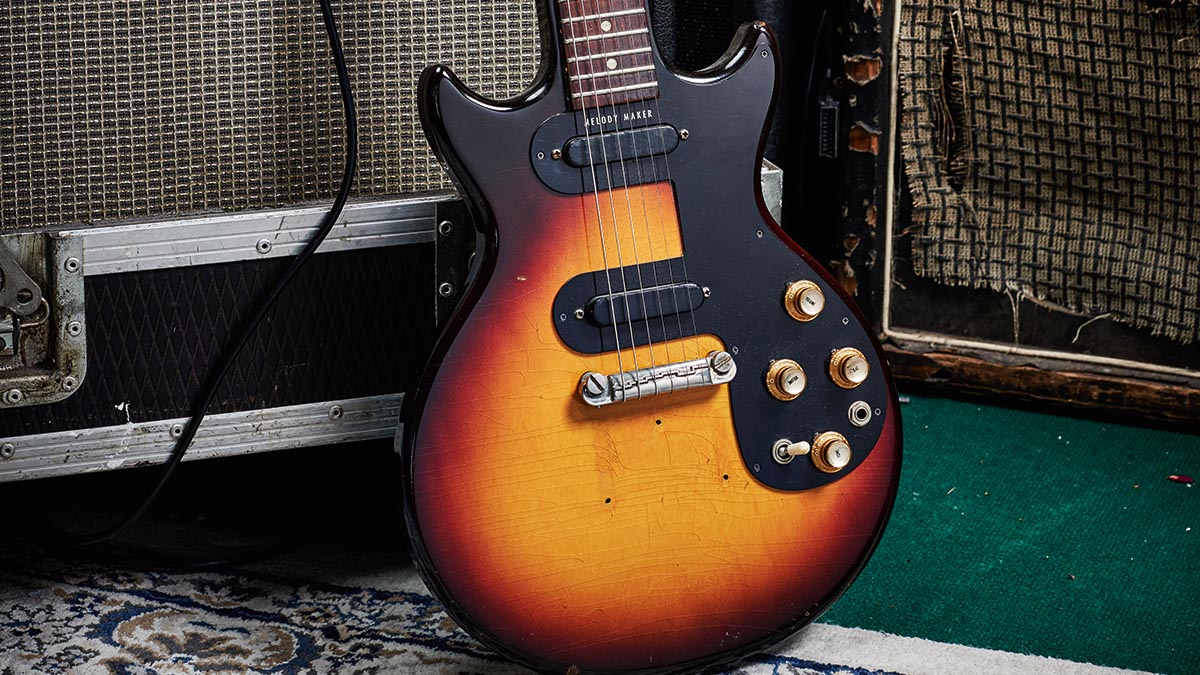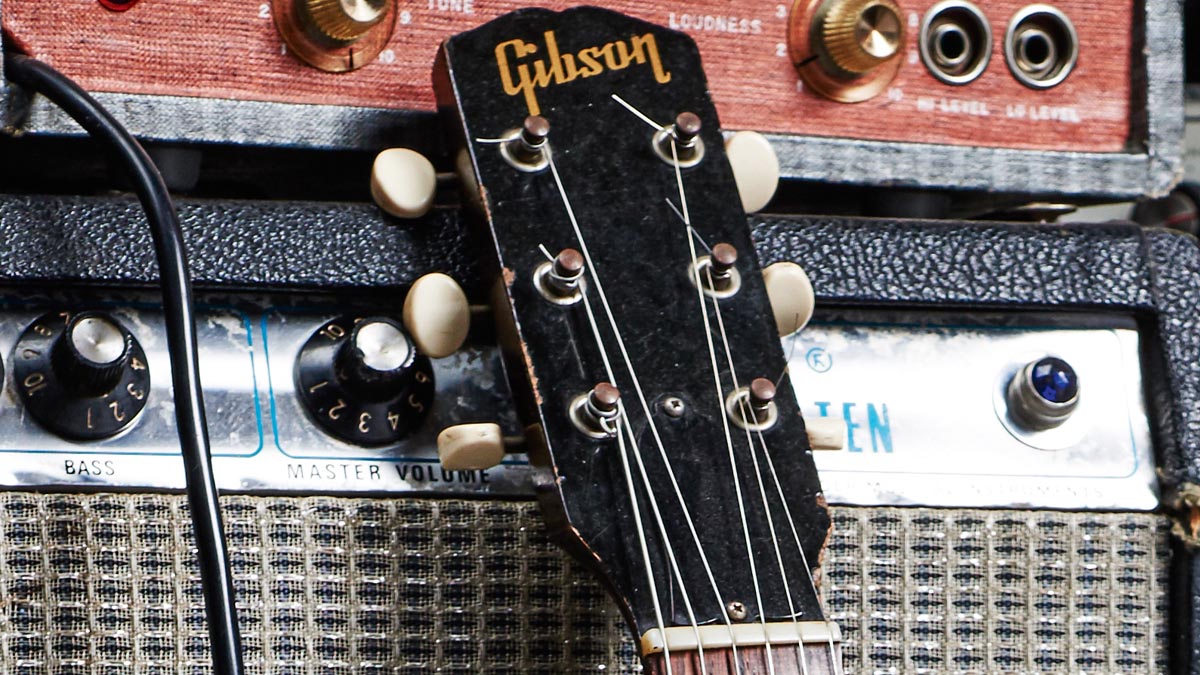
At first glance, the 1959 debut Melody Maker closely resembles the original single-cut, sunburst-finished Gibson Les Paul Junior introduced earlier in 1954. Similarly constructed using a mahogany slab-body and neck with an unbound 22-fret Brazilian rosewood ’board featuring dot markers, it’s clear where this single-pickup electric guitar takes its design cues from.
But with a depth of just 1 3/8", the body of the Melody Maker is significantly thinner than the 1 1/4"-deep Junior. Its headstock, too, is more slender than the Junior’s, with a straighter appearance it forgoes Gibson’s iconic profile.
However, it’s the PU-380 pickup that really sets the Melody Maker apart in terms of sound. Inherited from Gibson’s Skylark lap steel, this single-coil unit was simply built by winding 42-gauge wire around an Alnico bar magnet for roughly 8,500 turns to give a DC resistance reading around 7kohms.
It’s a similar concept to the archetypal Fender pickup, the obvious difference being the PU-380 does not feature separate pole pieces.
It was initially constructed with a grey fibre bobbin, before a moulded nylon type was introduced in 1960. For this reason, older Melody Makers have slightly wider pickup covers. PU-380s can also be spotted on Gibson’s ES-120T electric archtop, as well as the Epiphone-brand equivalents of the Melody Makers, the Olympics.
Similar to a Strat – or indeed Gibson’s ‘McCarty unit’ of the late 1940s – the Melody Makers’ pickups and electronics are attached to the instrument’s pickguard. In the case of the debut Melody Maker – and its shorter 22 3/4"-scale sibling, the Melody Maker 3/4 – this amounts to a single PU-380 positioned near the bridge, plus volume and tone controls.
Meanwhile, the Melody Maker D/Double (listed in late ’59 and first shipped the following year) sports an additional PU-380 at the neck, independent volume and tone controls for each pickup, and a three-way selector switch.
In 1961, the Melody Makers changed from a single- to double-cutaway design, and in 1965 the body shape altered yet again to incorporate pointier horns spaced slightly further apart, while the neck join moved from the 16th to the 18th fret. At this point, the standard finish switched from sunburst to cherry red.
Full access to the upper frets was high on Gibson’s agenda, and in 1966 the Melody Maker line followed in the footsteps of the Les Paul range by converting to the iconic SG style, whereupon a choice of two regular finishes were introduced: Pelham Blue and Fire Engine Red. At the same time, the pickguard and pickup covers changed from black to white and a vibrato unit became standard.
The following year, Gibson introduced triple-pickup and 12-string versions, the Melody Maker III and Melody Maker-12. Nevertheless, come the early '70s, all five SG-style Melody Makers were dropped from the catalog. The Melody Maker and Melody Maker Double were effectively replaced by the short-lived SG 100/100-W and SG 250/200/200-W, respectively.

The Evolution of the Gibson Melody Maker
-
Early 1959
Melody Maker & Melody Maker 3/4 introduced; single‑cutaway; 1x pickup -
Late 1959
Melody Maker D introduced; single-cutaway; 2x pickups -
1960
Pickup cover narrows from 7/8” to 5/8” -
1961
Double-cutaway; 16th-fret neck/body join retained; compensated ‘lightning’ bar bridge/tailpiece -
1962
Vibrato optional -
1965
Sharper double-cutaway horns; 18th-fret neck/body join; cherry red replaces sunburst finish -
1966
SG-style body; Pelham Blue or Fire Engine Red finishes; vibrato standard -
1967
Melody Maker III (3x pickups) & Melody Maker-12 introduced; Pelham Blue or Sparkling Burgundy finishes -
1969
Walnut finish (exc. Melody Maker‑12); Melody Maker 3/4 discontinued -
1971
All discontinued; replacedby SG 100/100-W (MM) & SG 250/200/200-W (MMD)







